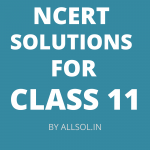

The Smarter way to learn anything
Our main goal is to give a free, world‑class educational instructions and guidance to every student. Through this website we are trying to provide qualitative teaching and learning aids to our visitors and users.

.........................
Get FREE Help with School Study Materials
On this website you will get the latest study materials, as well as updated news and all relevant information for all boards of education, college admissions, entrance exams, and Government job Exams. Here on this page you can get direct link for NCERT Book, NCERT Solutions, CBSE Latest Sample Papers, Previous Years Question Papers, CBSE Updated Syllabus, Detailed Chapters of Grammar, Essays, Letters, Applications, Updated Date Sheet of all classes , Results of board classes and CBSE & NCERT Related current NEWS on daily basis, which are important for teachers as well as for students.
Our Motivational Quotes for school board duty section is appreciated by many of our permanent users. By clicking on the link provided below you will directly land on that page , from where you can Read books of all subjects as well as can download it too. NCERT BOOKS and NCERT SOLUTIONS in both JPG and PDF form are available.

We know what you want.
We Bring, what you wanted
Since 2012, we are helping Students of different Schools and Classes. Experience Years of Teaching & Helping Students taught us about their needs. We Understand what & when they exactly want. Therefore, this Bond between us makes us even more Stronger.
Preparations for Exams
In our Preparation for exam section, one can easily find latest CBSE Sample papers, Previous years papers, all time Important questions, Important Key-Points, Summary & formulas of each chapter.
Free Education for All
Through this website we are trying to provide free study material for CBSE BOARD & NIOS Students. E-books & their solutions in jpg format as well as in pdf format are available to view and download on this site.
OUR FOCUSED AREAS
Learn with Us
Become lifelong learners with India’s best Educational website with
engaging youtube video lessons.
Now on Youtube too
Watch Videos for Better Understanding
Through our Videos we are trying to make things easier for those students who can not dare to ask their doubts in class. Feel free to ask any of your doubts in comment section we will try to give you our best possible support to solve your queries.
- All the sessions will be fun and easy to understand.
- All the doubts in comment box will be answered
- A New videos will be uploaded on daily bases
Happy To Help
Success Testimonials





National Means Cum Merit Scholarship Scheme

Study Tips for Better Grades

National Means Cum Merit Scholarship Scheme

National Scheme of Incentive to Girls for Secondary Education

Current Affairs 31 July 2022

Current Affairs 31 July 2022
............................
Our Latest Blogs
Because there’s always something new to learn.
Get in touch
Contact us now
















